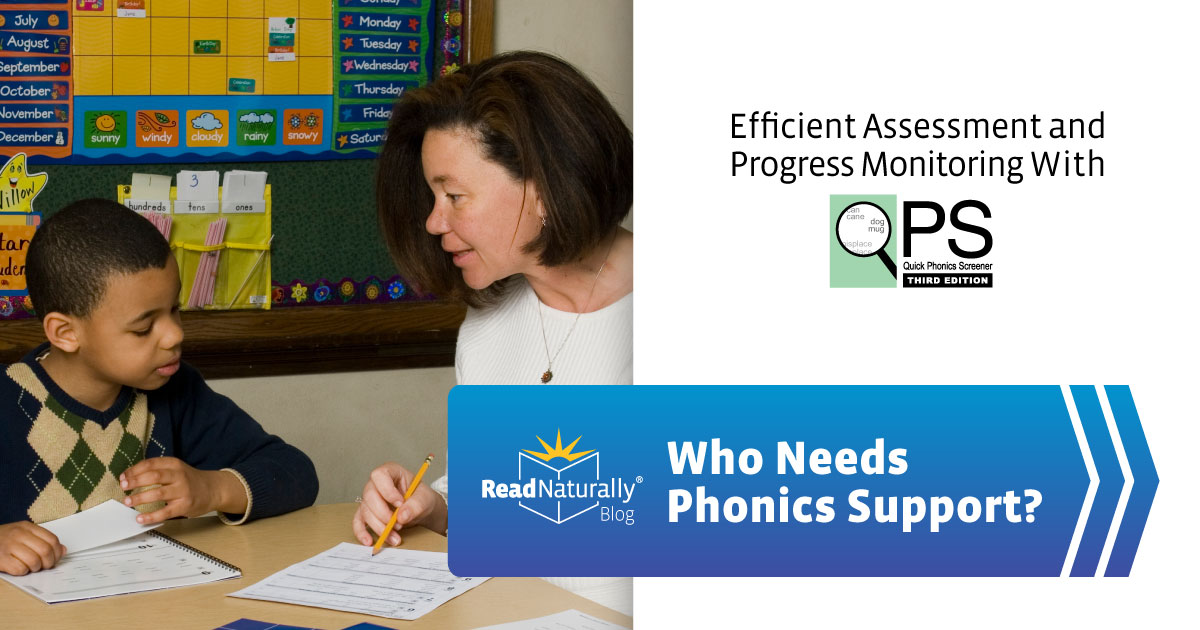Allow our QPS diagnostic phonics assessment to answer this question for you quickly and effectively. Did you know the latest edition of this popular tool allows you to screen an entire group of students at once and then use this data to determine which students need a more in-depth, individual phonics assessment? Both the group assessment and the individual assessment are now included in QPS, making it easier than ever for you to identify which students need phonics support and which skills an intervention should target.
group of students at once and then use this data to determine which students need a more in-depth, individual phonics assessment? Both the group assessment and the individual assessment are now included in QPS, making it easier than ever for you to identify which students need phonics support and which skills an intervention should target.
Here is how our curriculum experts recommend using QPS:
If you work with young or emerging readers, assess them individually using the Quick Phonics Screener (QPS). This assessment identifies which phonics skills a student has not yet mastered, allowing you to provide targeted support in these areas as needed. If you work with students who have a range of reading abilities, first give the Quick Spelling Survey (QSS), included in QPS, to an entire group or class, spelling-test style. The students’ scores will tell you whether they can encode as well as decode various phonics patterns. Using this information, you’ll be able to determine which students need further individual phonics assessment with QPS. The ability to survey a whole group at once using the Quick Spelling Survey (QSS) is a time saver that prevents you from administering an unnecessary individual phonics assessment to students who may not need it.
And speaking of saving time, we are pleased to offer free resources that allow you to organize your class data to quickly form groups. The QPS Class Planning Sheet and QSS Class Planning Sheet, available as free downloads, provide a way to record the data for an entire class on one sheet. When you transfer QPS/QSS data from the individual Summary Score Sheets (provided in QPS/QSS materials) onto the Class Planning Sheets, you can easily group students by need. For example, the Class Planning Sheets will show you at a glance which students need work on short vowels, which need work on long vowels, etc. From there, you can form small groups and provide the appropriate interventions.
According to our Educational Consultant, Karen Hunter, the individual Summary Score Sheets for QPS/QSS help teachers analyze the needs of each student individually through the year and bring the data to meetings with parents, etc. These Class Planning Sheets provide a handy way for teachers to organize current data for making instructional decisions for an entire group or class.
We hope the valuable information QPS provides helps you support your students on their journey to becoming fluent readers this year. If you have questions about QPS or how to choose an appropriate phonics intervention, please don’t hesitate to get in touch. And if you’re curious about our other tools and the challenges we address, be sure to check out our website.

 Share your student’s success story—nominate him or her for our Star of the Month award. Win a Barnes & Noble gift card for the student and a Read Naturally gift certificate for your class!
Share your student’s success story—nominate him or her for our Star of the Month award. Win a Barnes & Noble gift card for the student and a Read Naturally gift certificate for your class!
Post a New Comment